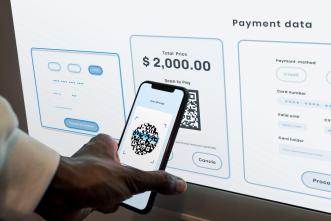The world today is so mobile-centric and launching a successful smartphone app is a challenging endeavor. With millions of apps vying for users’ attention, it’s crucial to avoid common pitfalls that can derail your app’s success before it even hits the market. Whether you’re a seasoned developer or a budding entrepreneur, steering clear of these key mistakes can mean the difference between a triumphant launch and a disappointing flop.
We explore some of the mistakes developers must avoid before launching their smartphone apps —providing actionable insights and best practices to help you navigate the complex world of app development and launch with confidence.
Lack of proper research
Failing to conduct thorough market research and validate your app idea can lead to building something that doesn’t meet user needs or has low demand. Proper research helps identify the target audience, competition, market trends, and potential challenges.
Before embarking on app development, it’s crucial to thoroughly research and validate your idea. Start by analyzing the specific problem your app aims to solve and whether it offers an innovative solution that aligns with your business model. Neglecting this step can result in a product that fails to resonate with users or address their needs effectively.
During the research phase, define your potential user base by understanding their demographics, goals, motivations, and interests. This insight will help you tailor your app to meet their needs and expectations. Additionally, research your competitors to identify your unique value proposition and learn what users expect from similar apps.
Inadequate budget planning
Underestimating the development costs or failing to account for post-launch expenses like marketing and maintenance can strain your resources. Carefully plan and allocate a realistic budget for the entire app lifecycle.
Developing a mobile app involves various costs beyond just the development phase. The overall budget should account for design, user interface, testing, and ongoing maintenance expenses. Additionally, factor in costs for marketing and promoting your app to reach your target audience effectively.
The scope of your app will significantly impact the development time and cost. Complex apps with numerous features will require a larger budget and longer development cycles. Providing detailed materials, briefs, and research to your development team can help them provide more accurate cost estimates.
Poor communication and feedback
Ineffective communication between the development team, stakeholders, and potential users can result in misaligned expectations and a product that misses the mark. Encourage open communication and actively seek feedback throughout the development process.
Clear and consistent communication is crucial at every stage of app development. Establish open channels for sharing feedback, addressing concerns, and resolving doubts with your development team and stakeholders. Regularly communicate project updates, milestones, and any changes in requirements or scope.
Actively seek feedback from potential users throughout the development process. This can be achieved through user testing, surveys, or beta releases. Incorporating user feedback early on can help refine your app’s features, user experience, and overall design, increasing the chances of delivering a product that meets user expectations.
ALSO READ: THE IMPORTANCE OF CUSTOMER FEEDBACK IN BUILDING A SUCCESSFUL STARTUP
Feature overload
Packing too many features into the initial release can lead to a cluttered user experience, increased development time, and higher costs. Focus on building a minimum viable product (MVP) with essential features first, then iterate based on user feedback.
While it’s tempting to include every desired feature in your app’s initial release, this approach can backfire. An overloaded app with too many features can overwhelm users, leading to a cluttered and confusing user experience. Additionally, it can significantly increase development time and costs.
Instead, adopt the Minimum Viable Product (MVP) approach. Start by building a core product with essential features that solve the primary user problem. This allows you to launch your app faster, gather user feedback, and iterate based on real-world usage data. Prioritize features based on user needs and add them in subsequent updates.
Neglecting testing and quality assurance
Skimping on thorough testing and quality assurance can result in a buggy app with poor performance, leading to negative reviews and high uninstall rates. Allocate sufficient time and resources for comprehensive testing across various devices and scenarios.
Testing and quality assurance are critical components of app development that should not be overlooked. Neglecting these steps can lead to a subpar product plagued by bugs, crashes, and performance issues, resulting in negative user experiences and poor reviews.
Allocate dedicated time and resources for comprehensive testing, including functional, usability, compatibility, and performance testing. Test your app across various devices, operating system versions, and usage scenarios to identify and rectify any issues before launch. Implement an iterative testing process throughout the development cycle to catch and address problems early on.
Ignoring user experience and design
A poorly designed app with a subpar user experience can quickly turn off users, regardless of its functionality. Prioritize intuitive design, usability, and a seamless user experience from the outset.
User experience (UX) and design are critical factors that can make or break your app’s success. Even the most feature-rich app can fail if it lacks an intuitive and user-friendly interface. Users expect a seamless and enjoyable experience from the moment they open your app.
Prioritize UX and design from the outset by involving UX experts and designers in the early stages of development. Ensure your app adheres to platform-specific design guidelines and best practices for navigation, layout, and user interactions. Conduct usability testing to identify and address any pain points or areas of confusion for users.
Also read:
Lack of security and privacy measures
Failing to implement robust security and privacy measures can put user data at risk and erode trust in your app. Ensure compliance with relevant regulations and industry best practices for data protection and security.
In today’s digital landscape, security, and privacy are paramount concerns for users. Failing to address these aspects can have severe consequences, including data breaches, legal implications, and a loss of user trust.
Implement robust security measures to protect user data, such as encryption, secure authentication, and secure communication protocols. Ensure compliance with relevant data protection regulations, such as the General Data Protection Regulation (GDPR) or the California Consumer Privacy Act (CCPA), depending on your target markets.
Communicate your app’s privacy policies and data handling practices to users, fostering transparency and building trust. Stay up-to-date with industry best practices for security and privacy, and regularly update your app to address any vulnerabilities or emerging threats.
By avoiding these mistakes, you can increase the chances of delivering a successful and well-received mobile app that meets user expectations and achieves your business goals. Note that launching an app is just the beginning —continuous improvement/updates, user feedback, and adaptation to market trends are essential for long-term success in the highly competitive mobile app landscape.
ALSO READ: WE CALL ON DEVELOPERS TO BUILD NATIVE APPS FOR HARMONYOS — HUAWEI













